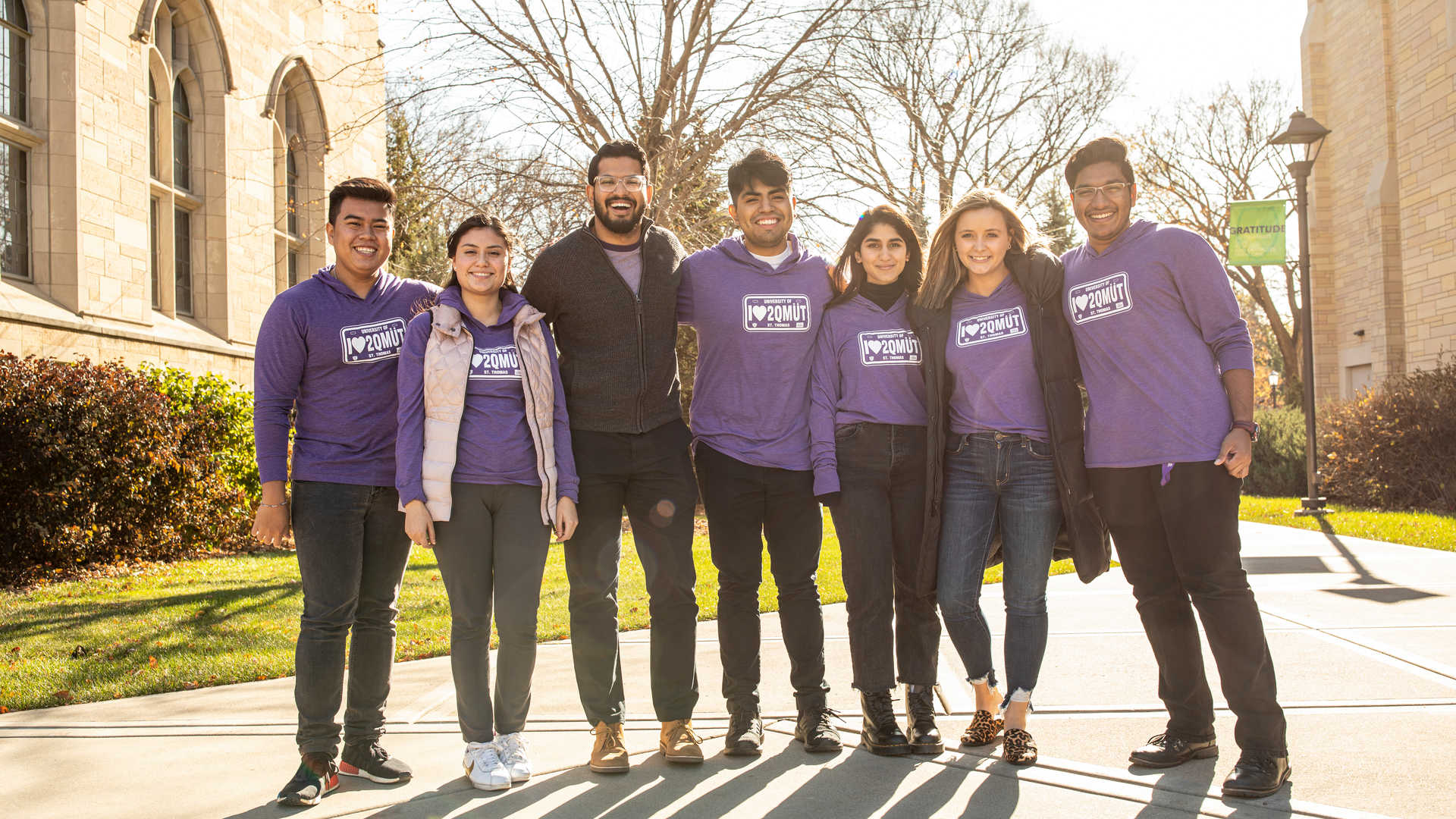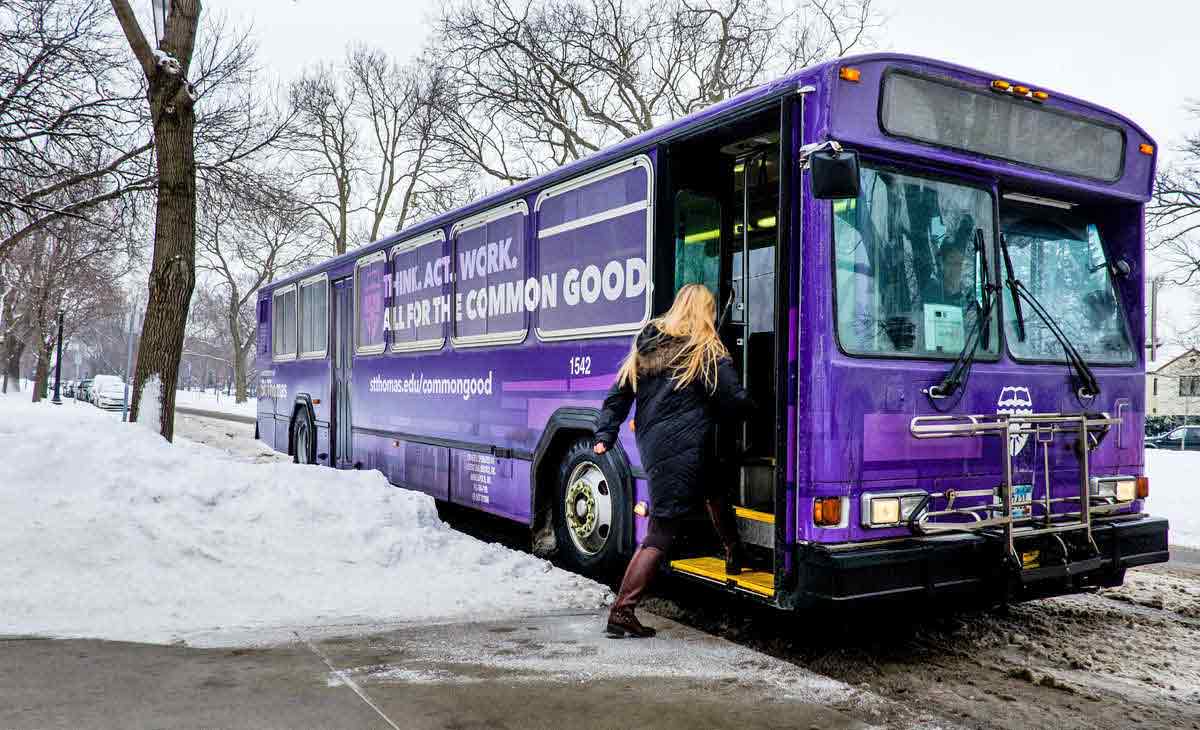Commuting Resources
The Office of Off-Campus Student Life is a resource and a hangout on campus for commuter students and those who live in the neighborhood. Our lounge in Anderson Student Center, room 218, provides a comfortable place to meet or make friends, eat lunch or study in peace. Amenities include computers, a full-size refrigerator, an office to focus on online classes and a Commuter Mentor or Neighborhood Student Advisor on duty to welcome you and answer questions.
Mass Transit
More Mass Transit Information
Below is a list of Metro Transit buses that connect directly to both St. Thomas campuses:
|
St. Paul campus |
21, 63, 134, 87 |
|---|---|
|
Minneapolis campus |
4, 6, 9, 12, 643, 762 |
C-Pass - Undergraduate and Graduate students registered for credits and who do not purchase a parking permit are eligible to purchase the Metro Transit C-Pass. The pass is available for fall and spring semesters and summer session. The C-Pass allows unlimited rides on Metro Transit buses and the light rail system. Information can be found at Parking & Transportation Services.
Metro Transit Interactive Tools:
Directions and Parking
Directions to our St. Paul and Minneapolis campuses.
Traffic
Planning your commute to campus and want to check out the traffic situation? Visit the MN Department of Transportation Traffic Map to get an updated, live look at traffic information.
The University of St. Thomas provides multiple parking options for commuter students, on both the St. Paul and Minneapolis campuses. Like most urban schools, the University of St. Thomas has an ongoing concern with parking. More than two thirds of our students, faculty and staff commute to the university.
In order to be parked legally on property owned by St. Thomas, you must purchase and correctly display a valid St. Thomas parking permit. Purchasing a permit does not guarantee a parking space and a lack of parking is not a valid excuse for any violation of parking regulations.
The following parking areas are designated for commuters with a parking permit:
-
Anderson Parking Facility (St. Paul south campus parking ramp)
-
Commuter Parking Lots (campus map)
-
Lots A, C, I, K, M, N and O
-
Lots B and G are open to Commuter permits after 5:00 pm
-
As most on-street parking around our St. Paul campus is residential permit restricted, it is not recommended that commuters attempt to park in the neighborhood.
Public Safety at St. Thomas offers a couple of services that are beneficial to commuters:
-
Walking Escorts: if you call Public Safety at (651) 962-5100, they will send an officer to walk with you anywhere on campus or up to six blocks off-campus.
-
Jump-starts: if your car won’t start, call Public Safety at (651) 962-5100 and they can come to give your vehicle a jump-start.
-
Lock-outs: if you’ve locked your keys in your vehicle, Public Safety can attempt to get you in. Call them at (651) 962-5100 and they will help you get into a vehicle that you have registered in our Murphy Online system.
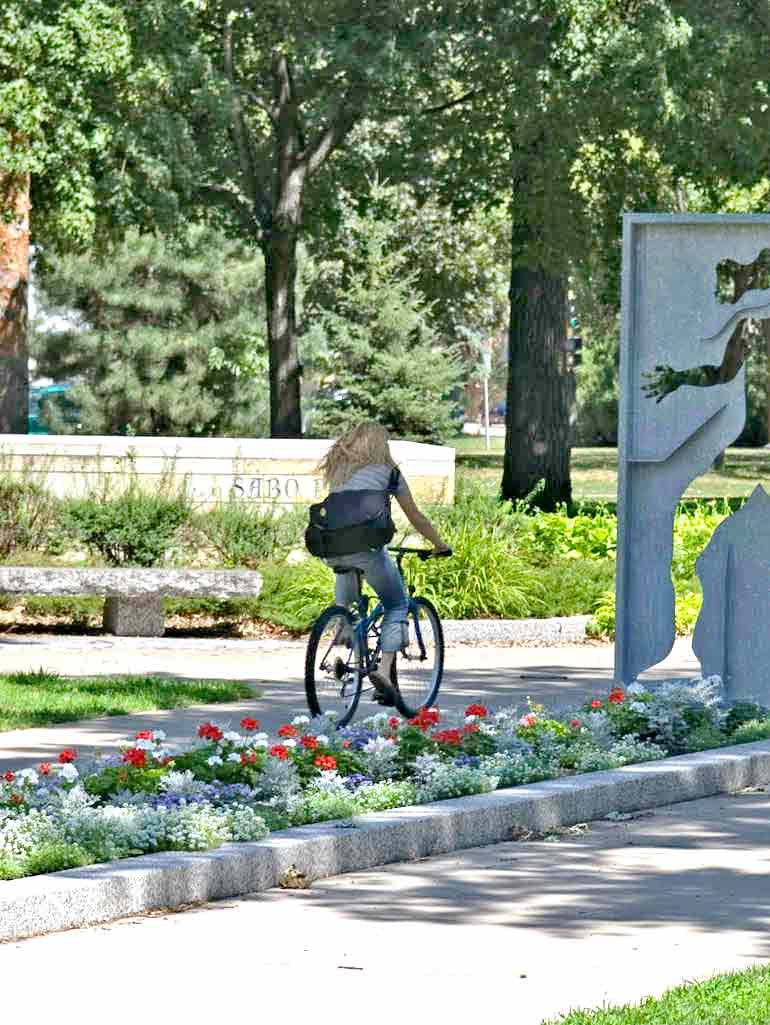
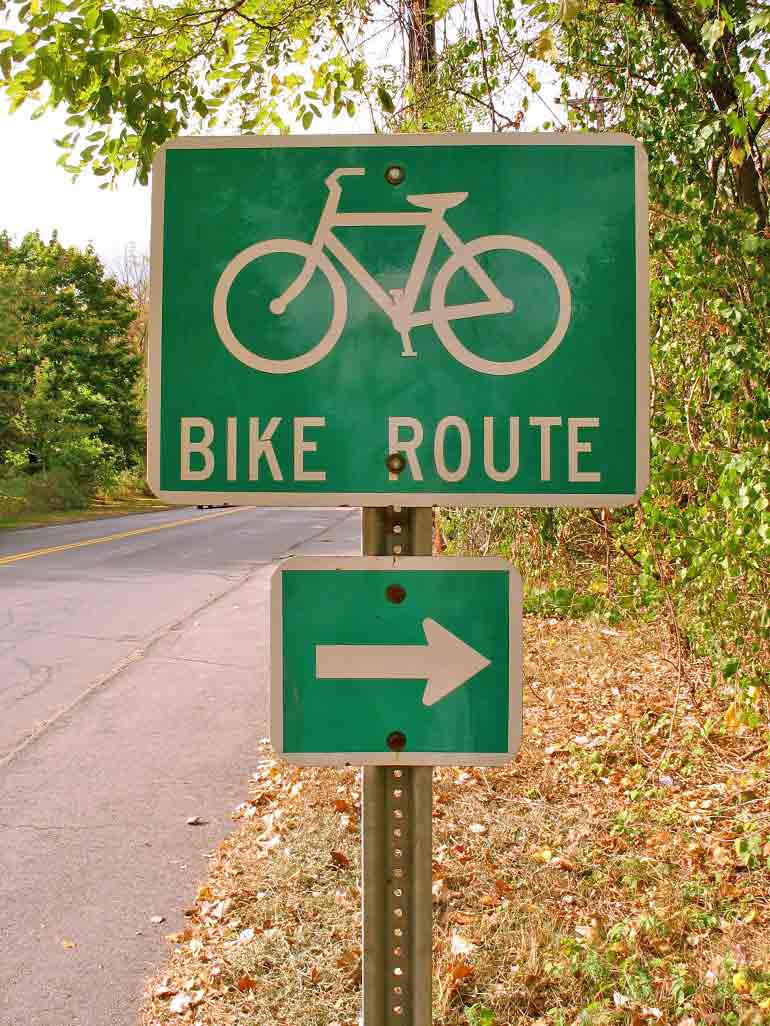
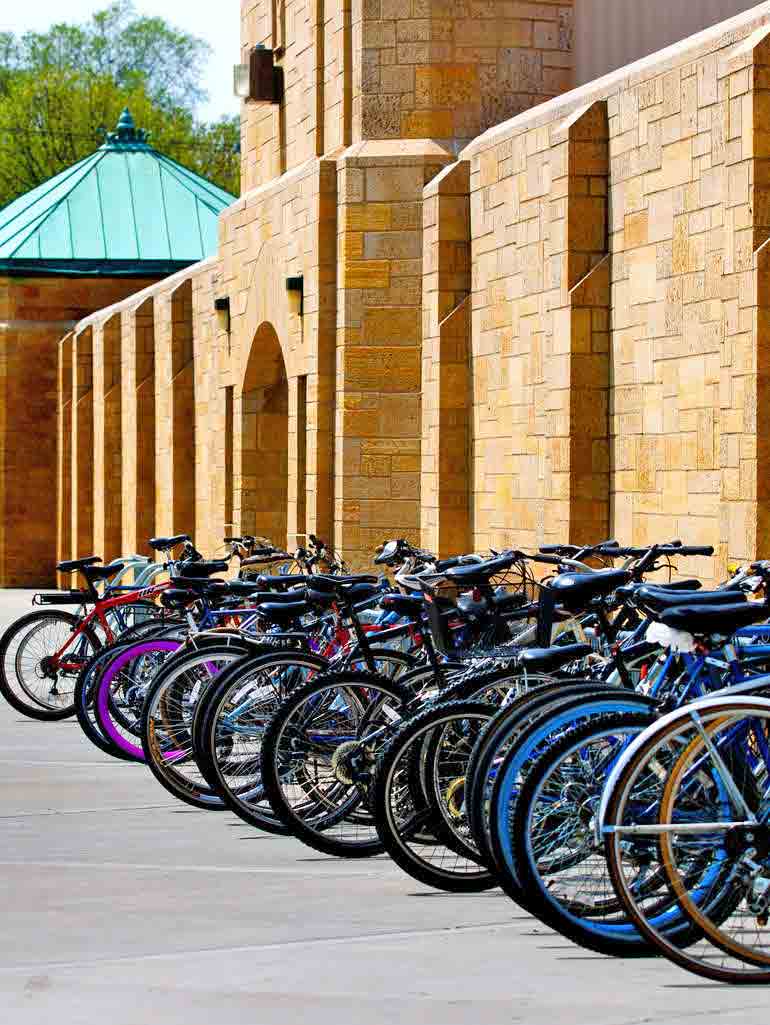
Biking
Riding your bicycle is an excellent way to get to and from campus. It is inexpensive, and environmentally friendly; plus, a great form of exercise. No matter where you live off-campus, getting to St. Thomas and around the Twin Cities is very easy when riding a bicycle.
Bike Routes
Minnesota has miles of paved bicycle trails. No matter which direction you are coming from, you will be sure to find a bike route to use. Use the resources below to plan your bicycle commute.
Smart Trips Bike Route Maps:
Bike Racks
There are a number of bicycle racks on campus available for student use. Many are near the entrances and exits to buildings and convenient for where you want to go on campus. Be sure to only lock your bike to a bike rack.
New Indoor Bike Parking on Campus
Located in the new Tommie North and Frey residence halls, cyclists have access to secure, covered bicycle parking indoors.
Additionally, there are numerous bicycle racks located throughout campus. Many are near the entrances and exits to buildings and convenient for where you want to go on campus. If there is not a rack right next to the door you intend to use, look at another entrance to the building.
Unfortunately, bicycle thieves do target college campuses; therefore our Public Safety office recommends the U-lock bicycle lock to secure your bike.
Also, be sure to only lock your bike to a bike rack. Bikes are not allowed to be secured to trees, signs, railings or any other object other than a bike rack. Bikes not secured to bike racks may be subject to removal by Public Safety.
Walking Information
Walking
Many of our students, faculty, and staff live in the neighborhoods around our St. Paul campus and find walking to our campus the easiest way to get around. Here are a couple of resources for folks whose primary mode of commuting will be their own two feet.
Walking Escorts
St. Thomas Public Safety offers a walking escort program. Call them up at 651-962-5100 to have a public safety escort come to where you are and walk with you anywhere on campus or within a six-block radius of our St. Paul campus. Their response time is ten minutes or less, and sometimes they bring a St. Thomas vehicle and can give you a ride.
Trails and Paths
St. Paul and Ramsey County have a number of pedestrian walking paths and trails.
Also, feel free to check out MapMyWalk.com as an online resource for planning your walking commute.
Safety
Overall, walking is one of the safest modes of commuting, but a little extra preparation and awareness never hurts. Here are some pedestrian safety tips from the Highway Safety Research Center:
-
Be predictable. Stay off freeways and restricted zones. Use sidewalks where provided. Cross or enter streets where it is legal to do so.
-
Where no sidewalks are provided, it is usually safer to walk facing road traffic.
-
Make it easy for drivers to see you - dress in light colors and wear retro-reflective material. It might be wise to carry a flashlight in very dark areas.
-
Be wary. Most drivers are nice people, but don't count on them paying attention. Watch out - make eye contact to be sure they see you!
-
Alcohol and drugs can impair your ability to walk safely, just like they do a person's ability to drive.
-
Use extra caution when crossing multiple-lane, higher speed streets.
Also, Minnesota law gives pedestrians the right of way at marked cross-walks or intersections without a crosswalk marked, but before entering, the pedestrian has to ensure that the road is clear and any road users have the ability to stop. Even with the right-of-way, use caution and common sense when crossing roads. More information about Minnesota’s crosswalk law can be found on Minnesota Safety Council website.
Walking
Walking
Many of our students, faculty, and staff live in the neighborhoods around our St. Paul campus and find walking to our campus the easiest way to get around. Here are a couple of resources for folks whose primary mode of commuting will be their own two feet.
Escorts
Walking Escorts
St. Thomas Public Safety offers a walking escort program. Call them up at 651-962-5100 to have a public safety escort come to where you are and walk with you anywhere on campus or within a six-block radius of our St. Paul campus. Their response time is ten minutes or less, and sometimes they bring a St. Thomas vehicle and can give you a ride.
Trails and Paths
Trails and Paths
St. Paul and Ramsey County have a number of pedestrian walking paths and trails.
Also, feel free to check out MapMyWalk.com as an online resource for planning your walking commute.
Safety
Safety
Overall, walking is one of the safest modes of commuting, but a little extra preparation and awareness never hurts. Here are some pedestrian safety tips from the Highway Safety Research Center:
-
Be predictable. Stay off freeways and restricted zones. Use sidewalks where provided. Cross or enter streets where it is legal to do so.
-
Where no sidewalks are provided, it is usually safer to walk facing road traffic.
-
Make it easy for drivers to see you - dress in light colors and wear retro-reflective material. It might be wise to carry a flashlight in very dark areas.
-
Be wary. Most drivers are nice people, but don't count on them paying attention. Watch out - make eye contact to be sure they see you!
-
Alcohol and drugs can impair your ability to walk safely, just like they do a person's ability to drive.
-
Use extra caution when crossing multiple-lane, higher speed streets.
Also, Minnesota law gives pedestrians the right of way at marked cross-walks or intersections without a crosswalk marked, but before entering, the pedestrian has to ensure that the road is clear and any road users have the ability to stop. Even with the right-of-way, use caution and common sense when crossing roads. More information about Minnesota’s crosswalk law can be found on Minnesota Safety Council website.
